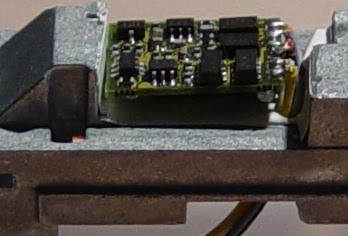Traditional Control
Since the beginning of the electric trains, the train speed is controlled by varying the voltage present on the track, of which the motors of the same take their supply. There are two main systems: The Call of two lanes, DC, and three-lane, alternating current.
The two-lane system and feeds a DC locomotives and wagons for one lane and returns on the other. Lanes have therefore polarity. Varying this polarity is achieved reverse the direction of travel.
Three rail system uses alternating current fed by the traffic lanes on one side and has a third central rail, including for return. Since the alternating current has no constant polarity to reverse the direction of movement is sent to the locomotive an overvoltage of approximately 20 to 24 volts which activates a mechanical or electronic mechanism for investment.
The locomotives of two lanes and three lanes are not compatible. The cars can be, according to the following rules:
Wagons with three lanes making way making two work if the wheels are isolated and do not carry any power outlet for lights, etc..
The cars of two lanes in three ways always work, but if they are equipped with lighting, it will not work.
Electronic control
A mid-90s, began to popularize based control systems in electronics and now has gone to using microcontrollers. This system has been largely standardized by the NMRA (North American Model Railways Association, or American association model railroad). Standardized systems receive the generic name of DCC (Digital Command Control). The system requires that the locomotives are installed an electronic circuit capable of driving the motor or accessories (lights, smoke generators, etc.) According to the digital commands received by the satellite by electronic circuits. The circuit is called locomotive decoder, and the installing operation is often called "scanning".
DCC systems also exist in two-and three lanes. Unlike traditional systems, the type of current flowing through the pathway may be the same in both cases. Actually systems two and three traditional lanes each had its advantages in the way of moving the compositions of different modes on the same circuit. Digital systems take individual control by microcomputer, regardless of the power system.
Regarding traditional control system, DCC control has the following advantages:
- You can control independently several locomotives on the same track, very close to each other.
- Locomotives and wagons can keep your headlights and other accessories while in detention, and its intensity does not vary with speed.
- You can also control other accessories such as turnouts, hookers, etc..
- Allows other gaming possibilities as functional cranes and other electrical accessories powered by the same source as the railroad.
The drawbacks of the system to the traditional DCC are:
- Need to digitize all locomotives, something especially difficult to locomotives old or smaller scales.
- Increased complexity for understanding its operation and for operation.


Tidak ada komentar:
Posting Komentar